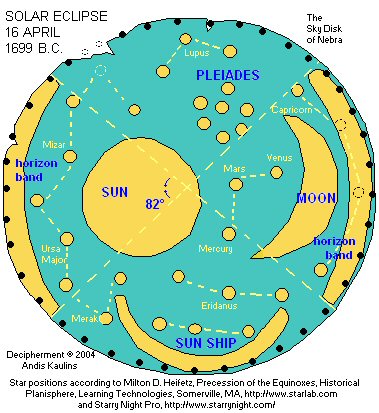"The sensation lies in the fact that the Bronze Age people managed to harmonize the solar and lunar years. We never thought they would have managed that,...The functioning of this clock was probably known to a very small group of people,"
The Bronze Age astronomers would hold the Nebra clock against the sky and observe the position of the celestial objects. The intercalary month was inserted when what they saw in the sky corresponded to the map on the disc they were holding in their hands. This happened every two to three years.
According to astronomer Wolfhard Schlosser of the Rurh University at Bochum, the Bronze Age sky gazers already knew what the Babylonians would describe only a thousand years later.
"Whether this was a local discovery, or whether the knowledge came from afar, is still not clear," Schlosser said.
Ever since the disc was discovered, archaeologists and astronomers have been puzzled by the shape of the moon as it appears on the disc. According to the ancient Babylonian rule, a thirteenth month should only be added to the lunar calendar only when one sees the constellation of the moon and the Pleiades exactly as they appear on the Nebra sky disc.
.

